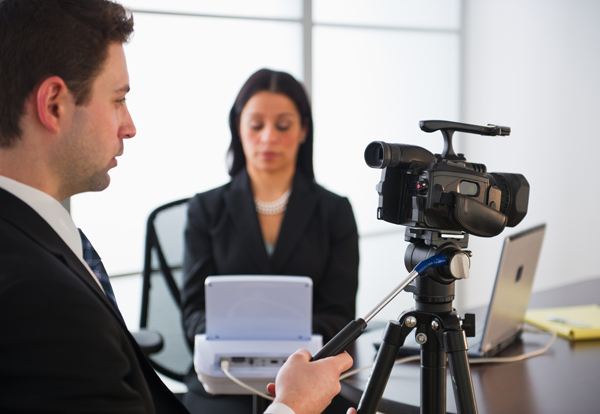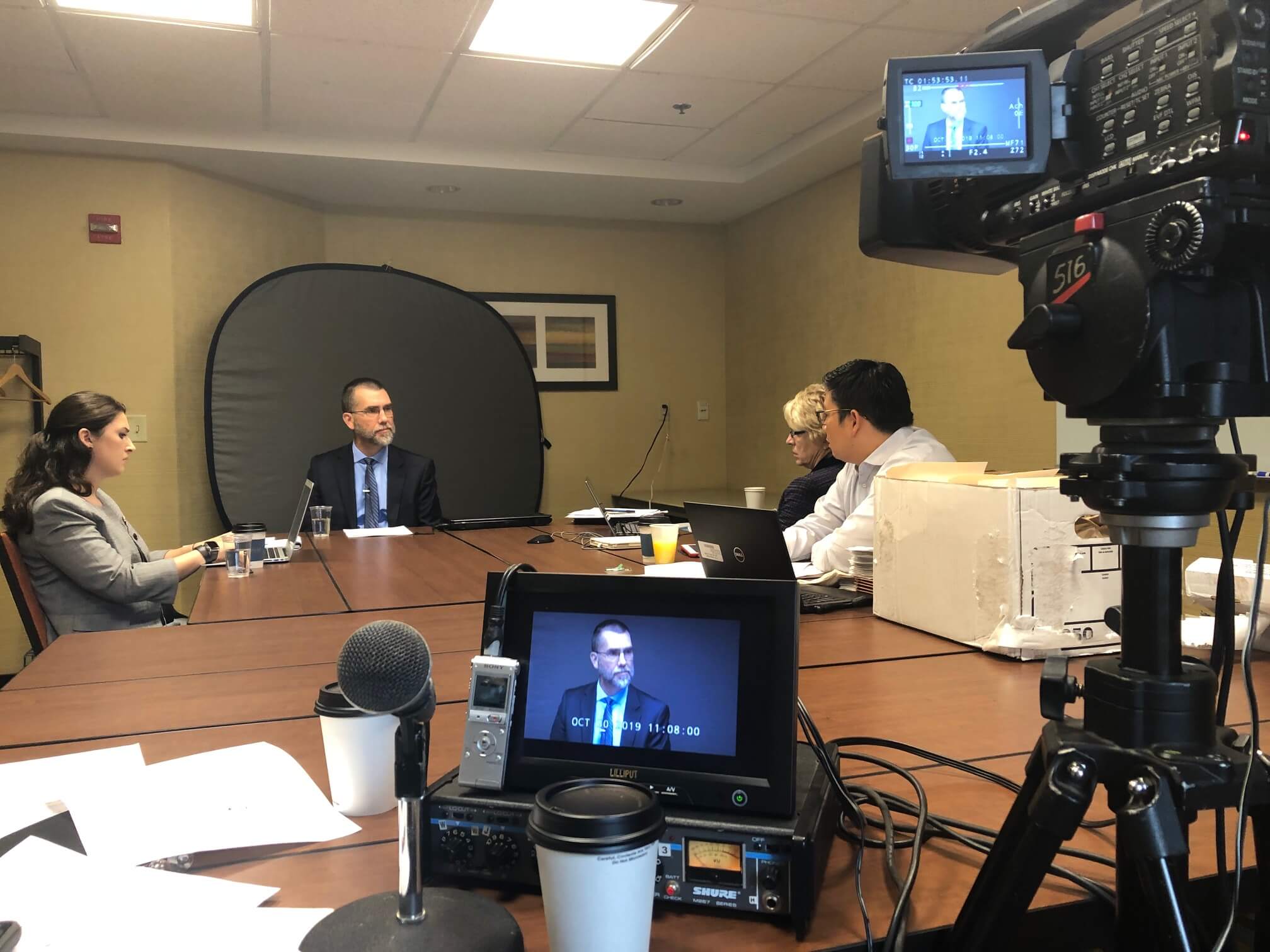How Legal Videography Enhances Courtroom Presentations and Evidence
How Legal Videography Enhances Courtroom Presentations and Evidence
Blog Article
Exploring the Systems of Lawful Videography: Introduction Its Operation in Safeguarding Authentic Aesthetic Testament for Judicial Process
In the world of judicial procedures, the role of lawful videography stands as a cornerstone in protecting and presenting aesthetic proof. As innovation proceeds to advancement, the devices behind legal videography have come to be progressively detailed, providing a crucial layer of authenticity to testaments captured on video.
Historic Evolution of Legal Videography
Checking out the historical progression of lawful videography discloses a significant improvement in the recording and presentation of visual evidence within the lawful landscape. In the past, lawful proceedings heavily counted on created pictures and transcripts to document events and supply proof. Nevertheless, with the advent of video innovation, the lawful sector witnessed a paradigm shift in exactly how aesthetic testament was recorded and offered.
The development of lawful videography can be mapped back to the late 20th century when improvements in video clip recording tools made it a lot more obtainable for usage in court rooms. This technical improvement not just improved the accuracy and reliability of visual evidence but also revolutionized the means instances were offered to juries and judges (Legal Videography). Lawyers started to acknowledge the convincing power of video recordings in conveying feelings, subtleties, and non-verbal cues that written transcripts or pictures alone can not catch effectively

Innovation Improvements in Video Paperwork
What crucial technological developments have transformed video documentation in the legal area? The lawful field has seen significant advancements in video clip documents innovation that have enhanced the credibility and integrity of visual evidence in judicial process. Among the crucial developments is high-definition (HD) video clip recording abilities, which supply crystal-clear images and sharp information that are critical for precisely capturing testimonies, face expressions, and other visual signs. In addition, the assimilation of timestamping and metadata attributes in video clip documents devices has actually made it possible for specific paperwork of when and where the video was videotaped, making certain the stability of the evidence provided in court.
Additionally, advancements in video clip encryption and watermarking innovations have actually boosted the safety and security and tamper-proof nature of video clip evidence, guarding it against unapproved changes or tampering. Additionally, the advent of cloud storage remedies and remote access capacities has streamlined the storage space, access, and sharing of video proof, helping with smooth partnership amongst legal experts and making certain efficient access to important aesthetic testimonies when needed. These technological improvements in video clip paperwork have actually most certainly revolutionized the lawful area, boosting the precision, credibility, and admissibility of aesthetic proof in judicial process.
Duty of Lawful Videographers in Court Settings
The development of video documentation technology in the lawful area has necessitated a crucial duty for lawful videographers in courtroom settings, making certain the stability and reliability of aesthetic statements presented throughout judicial procedures. Legal videographers play a basic function in capturing and maintaining precise aesthetic proof that can be pivotal in court instances. Their obligation includes establishing up devices, recording procedures, and producing high-grade video clips that accurately show the events in the court room.
In courtroom setups, legal videographers have to stick to rigorous guidelines and requirements to maintain the credibility of the aesthetic record. They should possess a keen eye for detail and a detailed understanding of lawful procedures to make certain that the video footage they record is a true depiction of the occasions that transpired. Furthermore, lawful videographers typically function closely with legal groups to ensure that the video proof straightens with the case's needs and can be effectively provided in court to sustain the lawful arguments being made. In general, the duty of lawful videographers in courtroom settings is vital in upholding the principles of justice and making sure the openness of lawful proceedings.

Ensuring Admissibility and Stability of Video Clip Evidence
To maintain the reputation of visual evidence site provided in lawful proceedings, making sure the admissibility and honesty of video evidence is an important duty for lawful videographers. Admissibility describes the approval of proof by the court, and for video clip evidence to be admissible, it should fulfill specific criteria. Legal videographers play a vital duty in guaranteeing that the videos they record abide by the rules of evidence, such as reliability, authenticity, and relevance.
Integrity of video evidence entails maintaining the creativity and precision of the video from the moment it is videotaped till it is offered in court. This consists of firmly keeping the video data, documenting the chain of custodianship, and stopping any type of tampering or alterations. Legal videographers have to comply with rigorous procedures to ensure the integrity of the video proof and stop any type of challenges to its authenticity.
Future Trends in Legal Videography
Offered the boosting reliance on technology in lawful procedures, legal videographers are positioned to welcome ingenious advancements forming the future of aesthetic testimony capture and discussion. One of the prominent fads imminent is the combination of online fact (VIRTUAL REALITY) and enhanced truth (AR) modern technologies into legal videography. These innovations have the possible to revolutionize exactly how visual evidence is offered in courts, about his enabling discretionary to immerse themselves in the scene of the criminal activity or incident.
Additionally, the use of fabricated knowledge (AI) formulas for video evaluation is expected to streamline the procedure of assessing and assessing huge quantities of video footage. AI can aid in determining crucial minutes, abnormalities, and patterns within videos, boosting the efficiency of lawful investigations.

Conclusion
In verdict, lawful videography has actually played a crucial role in providing authentic aesthetic proof for judicial procedures. With technical innovations and the proficiency of lawful videographers, the stability and admissibility of video clip proof are ensured in court room setups. As visit the website legal videography remains to evolve, it will be vital to maintain standards that keep the precision and dependability of aesthetic testament for the future of legal process.
Taking a look at the historical development of legal videography reveals a considerable makeover in the recording and presentation of aesthetic evidence within the lawful landscape.The development of video clip documentation innovation in the legal area has necessitated a crucial role for lawful videographers in court room setups, guaranteeing the stability and dependability of aesthetic statements offered during judicial proceedings. In addition, legal videographers frequently work closely with lawful teams to make sure that the video clip proof aligns with the case's needs and can be efficiently offered in court to sustain the lawful arguments being made.To maintain the integrity of visual evidence presented in lawful proceedings, guaranteeing the admissibility and stability of video evidence is a crucial responsibility for lawful videographers. As lawful videography proceeds to progress, it will be vital to maintain requirements that maintain the precision and integrity of aesthetic testament for the future of legal proceedings.
Report this page